VLBI technology development
Until 2021, NICT has been active in the development of VLBI technology. An archive of our activities is available here .
.
VLBI, Very Long Baseline Interferometry, is a technique of radio astronomy where signals of distant radio sources are simultaneously recorded by multiple radio telescopes. Separating these telescopes as interferometer elements over a very long baseline, often thousands of kilometers, dramatically improves the resolution of the observations.
This high-resolution information is extracted from the interference patterns between the observations of the radio telescopes, which requires all of them to share an accurate timing reference. In VLBI, the observing antennas typically use hydrogen maser atomic clocks as stable frequency signal sources for their observations, so that the phase information of the radio signal arriving at each station is preserved. Then interferometer data is produced by correlation processing of collected data. The results include information on the shape of the radio source, its position relative to the baseline vector of the observing antennas, and time delay due to the medium the signals propagated through, as well as the time and frequency difference of the antennas' reference clocks.
VLBI was originally developed for radio astronomy, but the technique has been applied in a wide range of fields, including geodesy measuring Earth’s rotation and crustal motion, as well as orbit determination of spacecraft.
A geodetic fiducial point
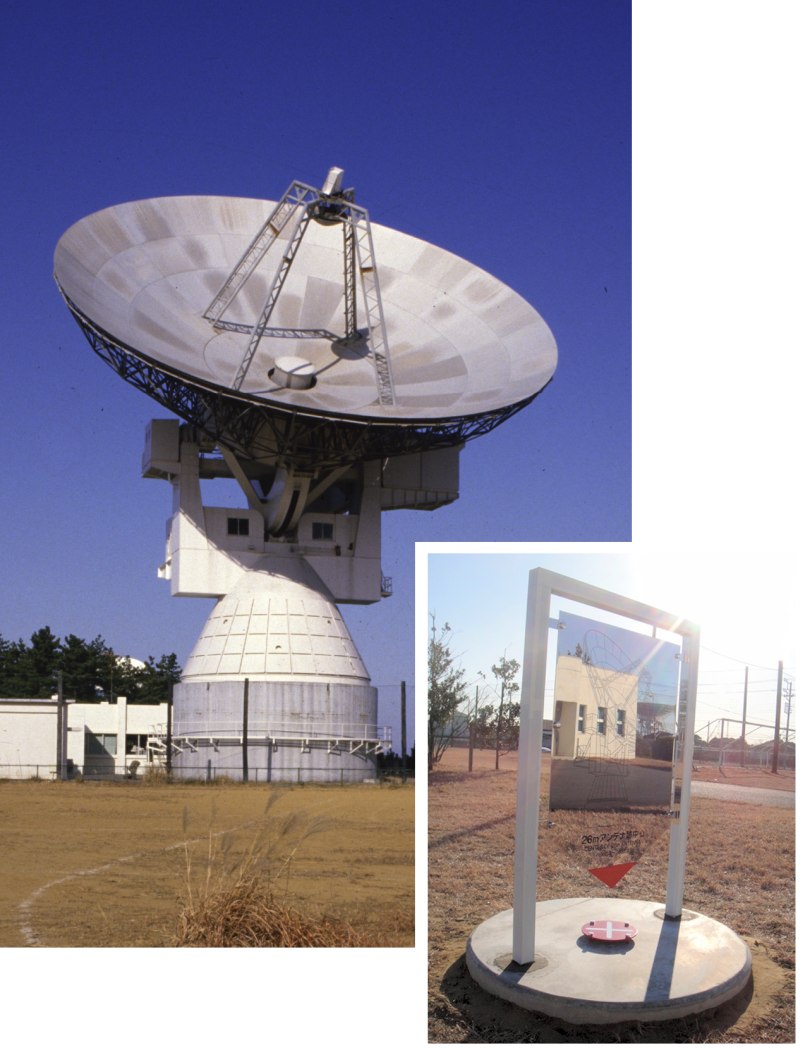
Right bottom: Memorial of the location of the 26m antenna, which was dismantled in 2003.
The Radio Research Laboratory (RRL), NICT's predecessor, started VLBI research in 1974, using a large parabolic antenna designed for space communications. Cooperating with NASA in the United States, VLBI observations with the Kashima 26m antenna demonstrated plate tectonics by measuring the movement of the Pacific Plate towards the subduction zone of the Japan Trench [1-4].
International geodetic VLBI observations were used to establish the global coordinate system of the International Terrestrial Reference Frame (ITRF). Since the coordinates of the Kashima 26m antenna within the ITRF were the most accurately known in Japan, it became the fiducial point in the transition of the national geodetic datum, the official reference frame for location, from a local to a global system [5].
New technology
Pioneering VLBI research continued as RRL was renamed Communications Research Laboratory and later became NICT. Important achievements in VLBI technology include a dedicated hardware correlator, an original VLBI data recorder, and software systems spanning from antenna operation to signal processing and data analysis. A series of VLBI systems K3, K4, K5 and K6 were developed for geodetic and astronomical VLBI observations. They were employed in many research institutes including the Geospatial Information Authority of Japan (GSI), the National Institute of Polar Research (NIPR), the Japan Aerospace Exploration Agency (JAXA), the National Astronomical Institute of Japan (NAOJ), and universities. Especially the high-speed sampler ADS3000+ and the Versatile Scientific Sampling Processor (VSSP) are still actively used for geodetic VLBI, for spectrometry, and for pulsar observations.
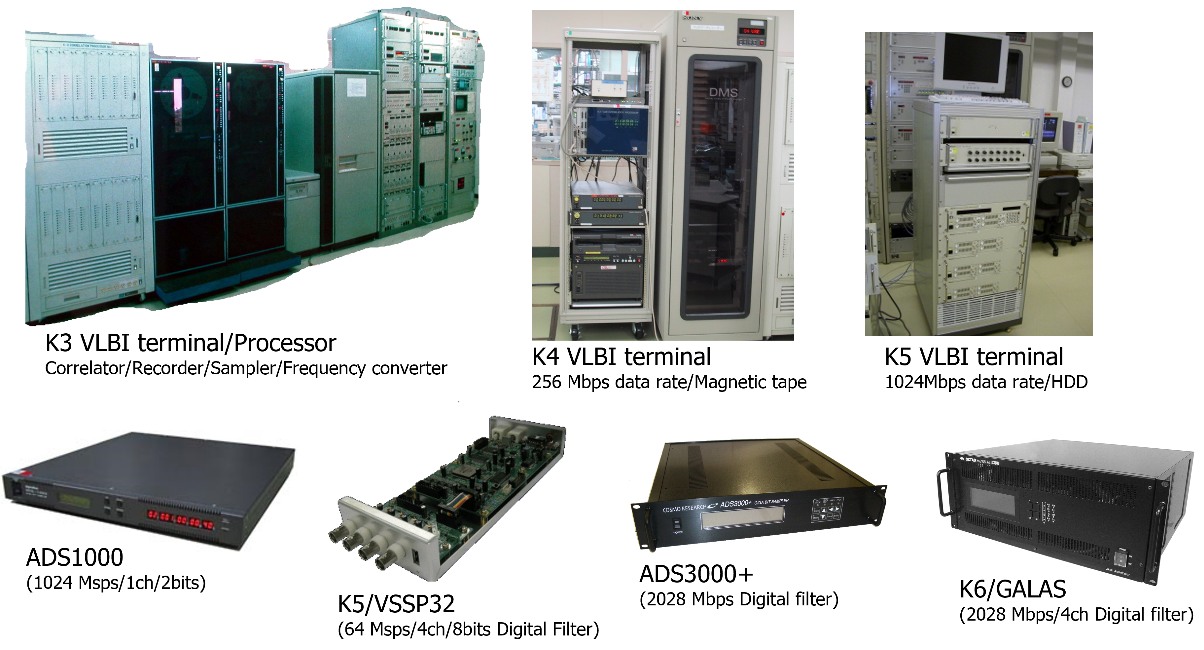
Novel applications
NICT and its predecessors played a leading role not only through improvements using novel technology like digital signal processing and data transfer over high-speed internet, but also through opening up new applications for VLBI.
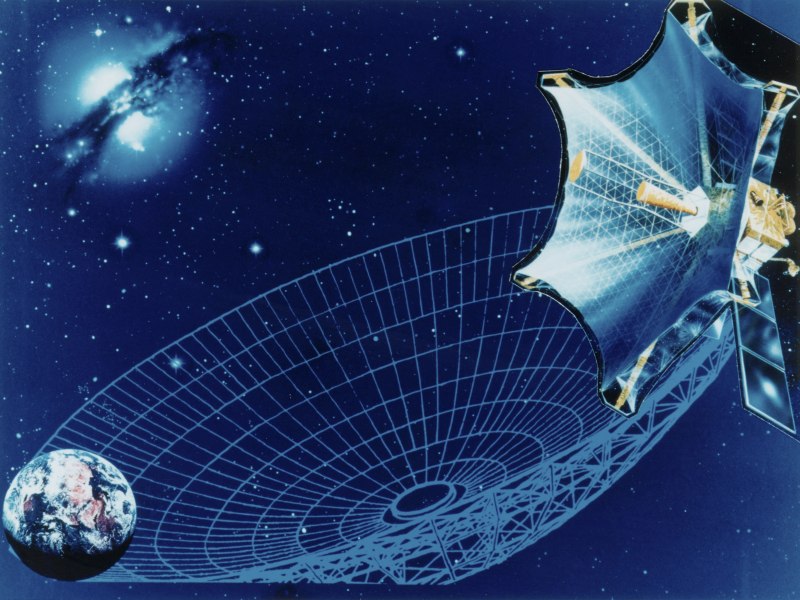
(Image: JAXA, used with permission).
The Kashima 34m antenna, the first large parabolic antenna in Japan dedicated to VLBI, was installed in 1988. It participated in global geodetic VLBI observations for the International Earth Rotation Service (IERS) and International VLBI Service for Geodesy and Astrometry (IVS). In the field of astronomy, it contributed as one of the Japanese ground stations to the success of the VLBI Space Observatory Programme (VSOP), the first mission that placed a dedicated VLBI antenna in space launched by JAXA/ISAS in 1997 [6-7].
The Kashima 34m antenna was also used in the technology development for orbit determination with VLBI, in collaboration with JAXA/ISAS. In response to our request, many Japanese VLBI stations participated in engineering test VLBI experiments involving the space probes "Nozomi" and "Hayabusa" [8-9].
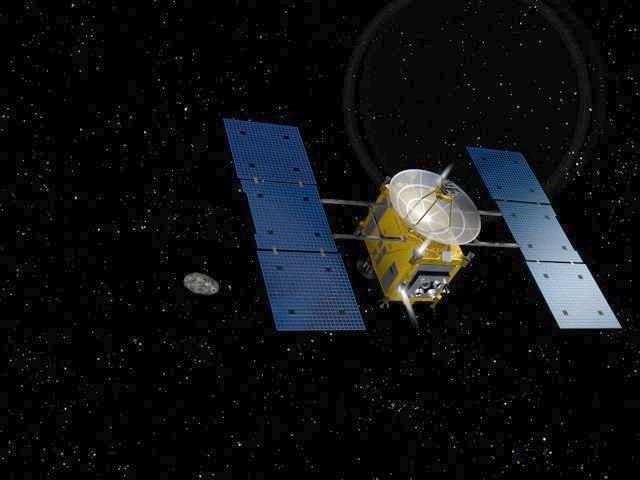
(Image: JAXA, used with permission).
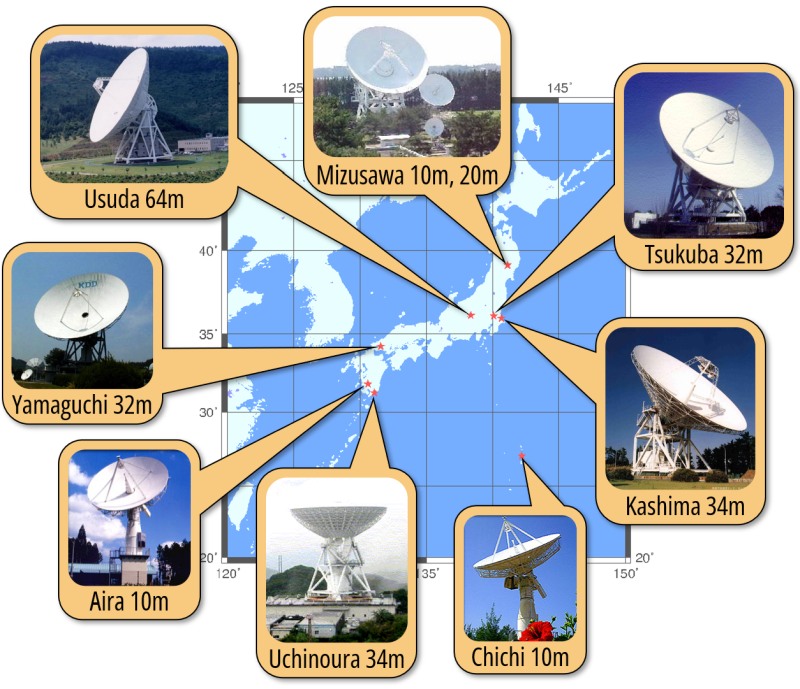
In 2018, NICT began an experiment on intercontinental frequency transfer with the Italian National Research Institute for Metrology (INRiM) and Institute for Astrophysics (INAF). This used two transportable broadband VLBI station to perform the first VLBI-based frequency comparison of optical lattice clocks [10]. These clocks are Secondary Frequency Standards, contributing to International Atomic Time at NICT and INRiM.
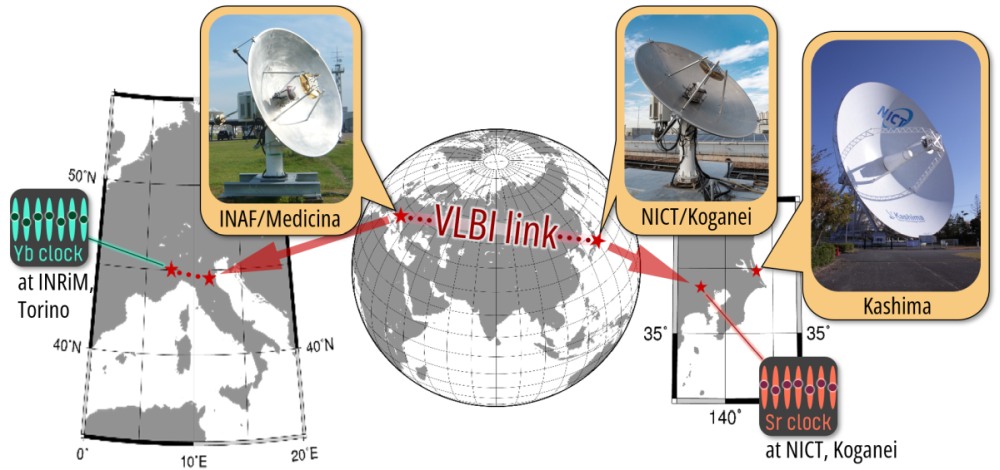
Unfortunately, the Kashima 34m telescope was irreparably damaged by a typhoon in 2019. Since 2021, VLBI technology development is no longer an active research task of the Space-Time Standards Laboratory, although we continue to operate the Koganei 11m VLBI station as a part of our geodetic observation facilities.
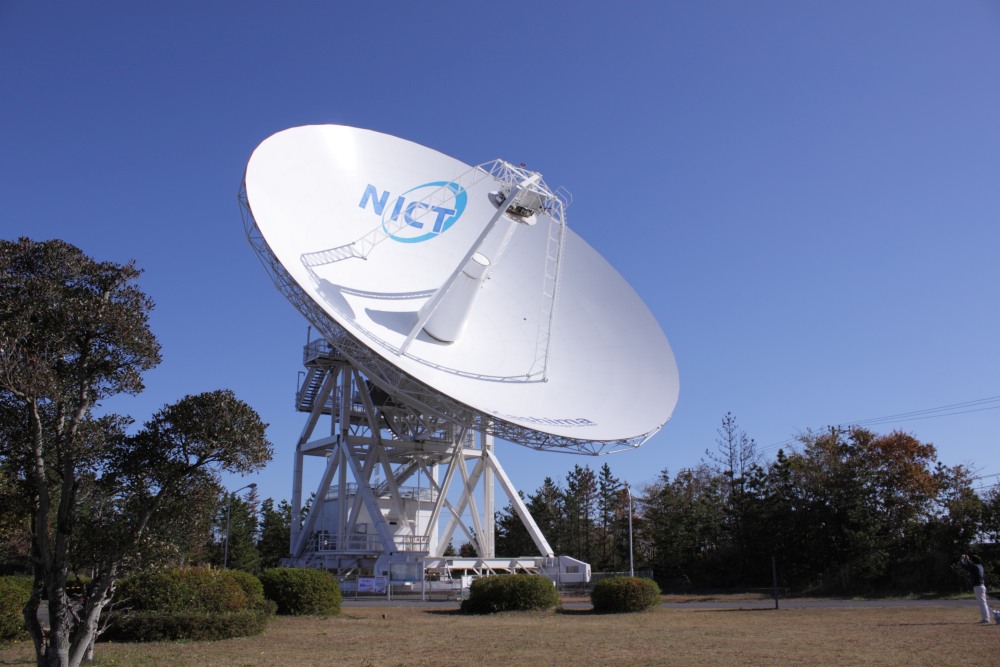
Selected references
1.
日置幸介,
星の電波で大陸の動きを測る,
科学朝日 第45巻、第6号, 25-29 (1985)
(1985)
2.
K. Heki, Y. Takahashi, T. Kondo, N. Kawaguchi, F. Takahashi and N. Kawano,
The relative movement of the North American and Pacific plates in 1984-1985, detected by the Pacific VLBI network,
Tectonophysics 144, 151-158 (1987)
(1987)
3.
日置幸介,
VLBIでみる地球,
科学 59, 316-319 (1989)
(1989)
4.
K. Heki, Y. Takahashi and T. Kondo,
Contraction of northeastern Japan: Evidence from horizontal displacement of a Japanese station in global very long baseline interferometry networks,
Tectonophysics 181, 113-122 (1990)
(1990)
5.
S. Matsumura, M. Masaki and I. Tetsuro,
Concept of the new Japanese geodetic system,
Bulletin of the Geographical Survey Institute 51 1-9 (2004)
(2004)
6.
H. Hirabayashi et al.,
Overview and Initial Results of the Very Long Baseline Interferometry Space Observatory Programme,
Science 281(5384) 1825-1829 (1998)
(1998)
7.
H. Hirabayashi et al.,
The VSOP 5 GHz AGN Survey I.,
Compilation and Observations Publications of the Astronomical Society of Japan 52(6) 997–1014 (2000)
(2000)
8.
M. Sekido et al.,
Astronometry Observation of Spacecraft with Very Long Baseline Interferometry – A Step of VLBI Application for Spacecraft Navigation,
URSI Commission-F Triennium Open Symposium proceedings 163-170 (2004)
(2004)
9.
M. Sekido et al.,
Evaluation of differential VLBI phase delay observable for Spacecraft Navigation - ΔVLBI observation of Hayabusa at touchdown to ITOKAWA,
Proc. SICE Annual Conference 2007 at Kagawa Univ. (2007)
(2007)
10.
M. Pizzocaro et al.,
Intercontinental comparison of optical atomic clocks through very long baseline interferometry,
Nature Physics 17(2) 223-227 (2021)
(2021)

